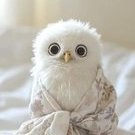-
Content count
11,288 -
Joined
-
Last visited
-
Days Won
243
Everything posted by doc benway
-

Year of the Buffalo main page logo change
doc benway replied to Gerard's topic in Forum and Tech Support
That’s been done -

Year of the Buffalo main page logo change
doc benway replied to Gerard's topic in Forum and Tech Support
@sean is the banner master. I always enjoy his creations. -

USAF ends firing range near Buddhist Monastery
doc benway replied to Encephalon's topic in General Discussion
Sadly the US and many of her citizens are, or claim to be, unaware of the profound damage we've done and continue to do to our neighbors on Earth. -
That can happen in person too. You need the right teacher. And to be in their presence... especially in the beginning. Once you learn to self correct you can get the most from video instruction. Before then it’s a bit like miss by a cm, miss by a km...
-
Another thing to bear in mind, the vast majority of people who can stand for long enough to practice qigong can also walk, at least enough to work with a smaller frame form. Standing in place can be as challenging for the balance as mindful stepping.
-
Rare photo of a stork delivering a baby!
-
I can think of no better exercise for senior well being than taijiquan. I find it to be better than most qigong forms in that it requires shifting of the weight, stepping, and cultivates leg strength and balance which have been shown to reduce falls and fractures in seniors. One caveat, I do not think learning through books or videos are adequate, particularly for seniors. I base this on having taught taijiquan and qigong to seniors, several of whom had tried to learn without live instruction for a time through books, videos, and online resources. My experience was that seniors often require a little extra time, patience, and explanation/demonstration to become comfortable and self-correcting in their form practice, as compared to younger adults. Several of my students had significant health challenges - back, knee, and shoulder issues, arthritis, cardiac and respiratory issues, and more. The majority of them stuck with the program for long enough to feel tangible benefits. Qigong can be wonderful for them as well but, provided they are capable, the weight shifting and stepping requirements of taijiquan make it an optimal exercise for seniors, IMO.
-
🤣 Yes and yes, and raised in a rural farming community and a Daoist. One of the first people to interest me in Daoism... And one of the best nurses I ever worked with 😷
-

Shaking to improve immunity, prevent colds and flus, expel wind-cold pathogenic qi, strengthen protective qi
doc benway replied to Walker's topic in General Discussion
Shaking can be used to help process and heal traumatic effects trapped in the body/mind. Trauma Release Exercise is one method for that. TRE is quite different from the shaking that Walker suggested in the OP. Anything that mobilizes trauma in the system, however, can potentially bring up memories and related energetic effects so always good to be cautious and have support available if you are a trauma survivor.- 57 replies
-
- 1
-

-
- immunity
- coronavirus
-
(and 3 more)
Tagged with:
-
Reminds me of what a nurse once told me defines the male reaction to life. She felt we are limited to three possible choices - eat it, kill it, or fuck it....
-
The Teachings of Don Juan - Carlos Castaneda When the Shoe Fits - Osho Awareness - Anthony Demello Total Freedom - Jiddu Krishnamurti ... among others
-

NINE STEP Purification - Secret Mantra Tradition
doc benway replied to C T's topic in Buddhist Discussion
The Nine Breaths are a tantric method of energetic purification. Each of the three major channels are associated with energetic content - disturbances, trauma, blockages, habitual patterns... The awareness rides the subtle winds, like a rider and a horse, through the channels clearing and opening us to an unlimited source of inner creativity and healing. It's usually the first, or early, step in a comprehensive program of energetic methods which include tsa lung, trul khor, and tummo. We work from more coarse material and practices to progressively more subtle levels, leading to ever deeper purification and connection.- 2 replies
-
- 3
-

-
- tantra
- winds & channels
-
(and 2 more)
Tagged with:
-
-
"Charity is really self-interest masquerading under the form of altruism." ~ Anthony Demello
-
I'm currently reading The Overstory by Richard Powers. I'm not very far into the book but I am completely blown away by Powers' vision and his masterful command of the written word. His style reminds me a bit of Salman Rushdie. This is a book that may take me a while to read, it is one to relish and absorb rather than finish, at least it seems that way so far. Wow! Just finished this book and it affected me far more deeply than most books I’ve read. I’m in awe of Powers’ intelligence and humanity. I may read it again...
-

Seeing, Recognising & Maintaining One's Enlightening Potential
doc benway replied to C T's topic in Buddhist Textual Studies
All of the various types of teachings and spiritual paths are related to the different capacities of understanding that different individuals have. There does not exist, from an absolute point of view, any teaching which is more perfect or effective than another. A teaching's value lies solely in the inner awakening which an individual can arrive at through it. If a person benefits from a given teaching, for that person that teaching is the supreme path, because it is suited to his or her nature and capacities. ~ Namkhai Norbu Rinpoche -
Just finished The Magician of Lhasa, another thriller with heavy spiritual content, this time in the form of Tibetan Buddhism. I thoroughly enjoyed it and found it an inspiration for my own practice. Highly recommended, especially for Dharma practitioners and anyone who enjoyed Alexandra David-Neel’s books or Thomas Shor’s A Step Away from Paradise. https://images.app.goo.gl/9JkMBxdF3mCGZZA27
-

Interesting correlation between God and light in major world religions
doc benway replied to Ajay0's topic in General Discussion
@manitou I just finished reading a fun book called Recursion by Blake Crouch that I mentioned in another thread. These concepts you mention are the foundation for the book - the illusory nature of linear time, the primacy of mind in establishing our reality, and so on. It's a thriller about a woman who builds a machine to capture and restore memory in hopes of helping her mother who is suffering from dementia. What she creates leads to unexpected and catastrophic consequences. Some of it is a bit speculative but I enjoyed the ride. You may want to check it out. -
Just finished another book I enjoyed It's a fast paced thriller that plays with the nature of memory and reality.
-

The arts of peace and the arts of war
doc benway replied to Encephalon's topic in General Discussion
A bit of a detour but I started watching a Netflix series, Age of Samurai: Battle For Japan. One episode in and it’s quite good for anyone interested in the political and military history beginning in the 16th century.



